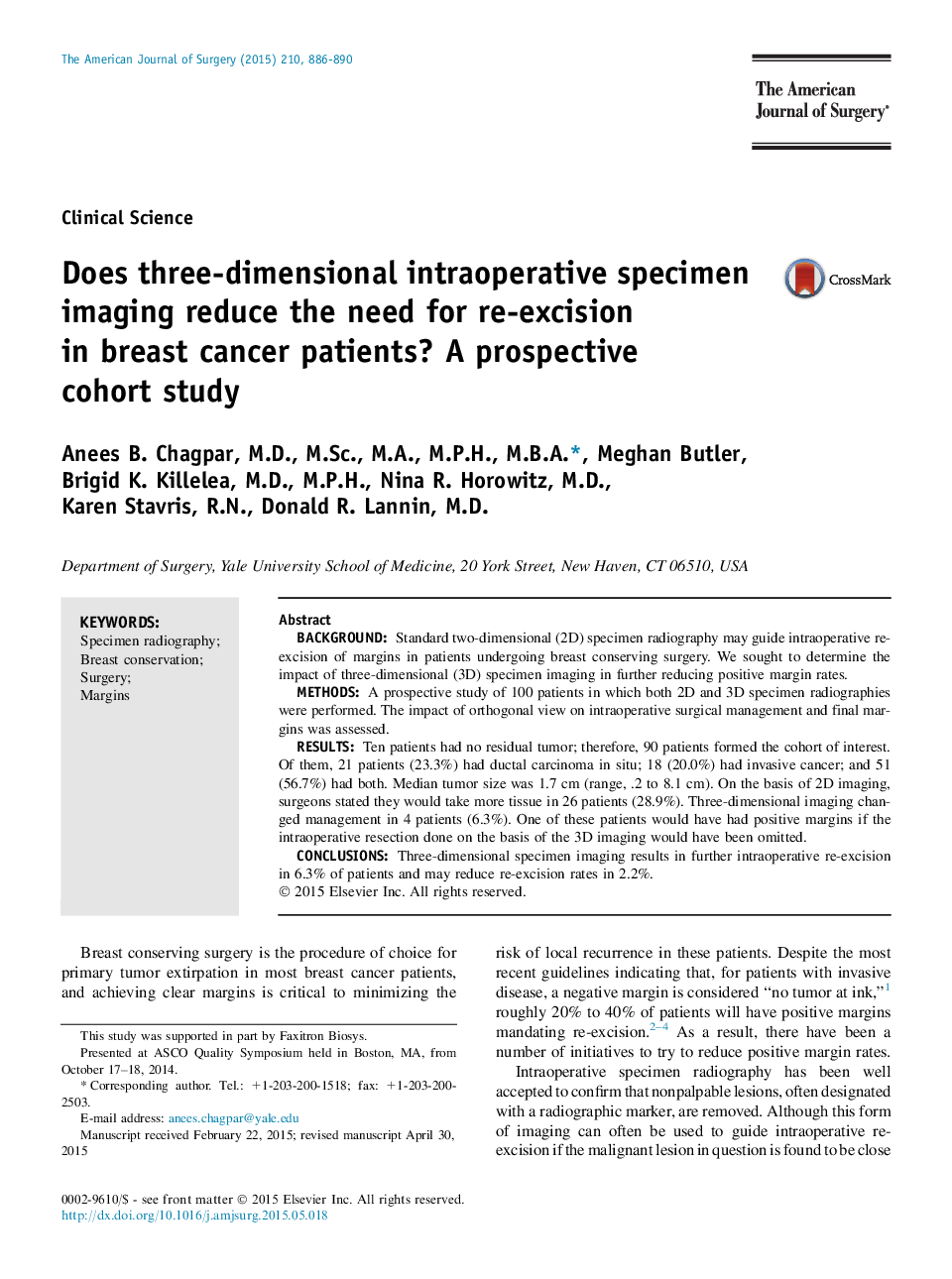| Article ID | Journal | Published Year | Pages | File Type |
|---|---|---|---|---|
| 4278259 | The American Journal of Surgery | 2015 | 5 Pages |
•Two dimensional specimen radiography reduces positive margin rates by 7.8%.•Adding orthogonal (3D) images reduces positive margin rates by another 1.1%.
BackgroundStandard two-dimensional (2D) specimen radiography may guide intraoperative re-excision of margins in patients undergoing breast conserving surgery. We sought to determine the impact of three-dimensional (3D) specimen imaging in further reducing positive margin rates.MethodsA prospective study of 100 patients in which both 2D and 3D specimen radiographies were performed. The impact of orthogonal view on intraoperative surgical management and final margins was assessed.ResultsTen patients had no residual tumor; therefore, 90 patients formed the cohort of interest. Of them, 21 patients (23.3%) had ductal carcinoma in situ; 18 (20.0%) had invasive cancer; and 51 (56.7%) had both. Median tumor size was 1.7 cm (range, .2 to 8.1 cm). On the basis of 2D imaging, surgeons stated they would take more tissue in 26 patients (28.9%). Three-dimensional imaging changed management in 4 patients (6.3%). One of these patients would have had positive margins if the intraoperative resection done on the basis of the 3D imaging would have been omitted.ConclusionsThree-dimensional specimen imaging results in further intraoperative re-excision in 6.3% of patients and may reduce re-excision rates in 2.2%.
